Table of Contents
1. Introduction to Monstera
Because of its vibrant look and enticingly pierced foliage, Monstera is a common sight in modern homes. However, this tropical charmer’s well-being hinges on a critical factor: temperature. Maintaining optimal thermal conditions within your indoor oasis is paramount for the Monstera’s long-term flourishing. Therefore, comprehending its ideal temperature range is an essential prerequisite for cultivating a thriving Monstera.
In this post, Xanh Xanh Urban Forest will explore the ideal temperature range for Monsteras, as well as the potential consequences of too much or too little heat. We will also provide tips on how to create the perfect thermal environment for your Monstera.
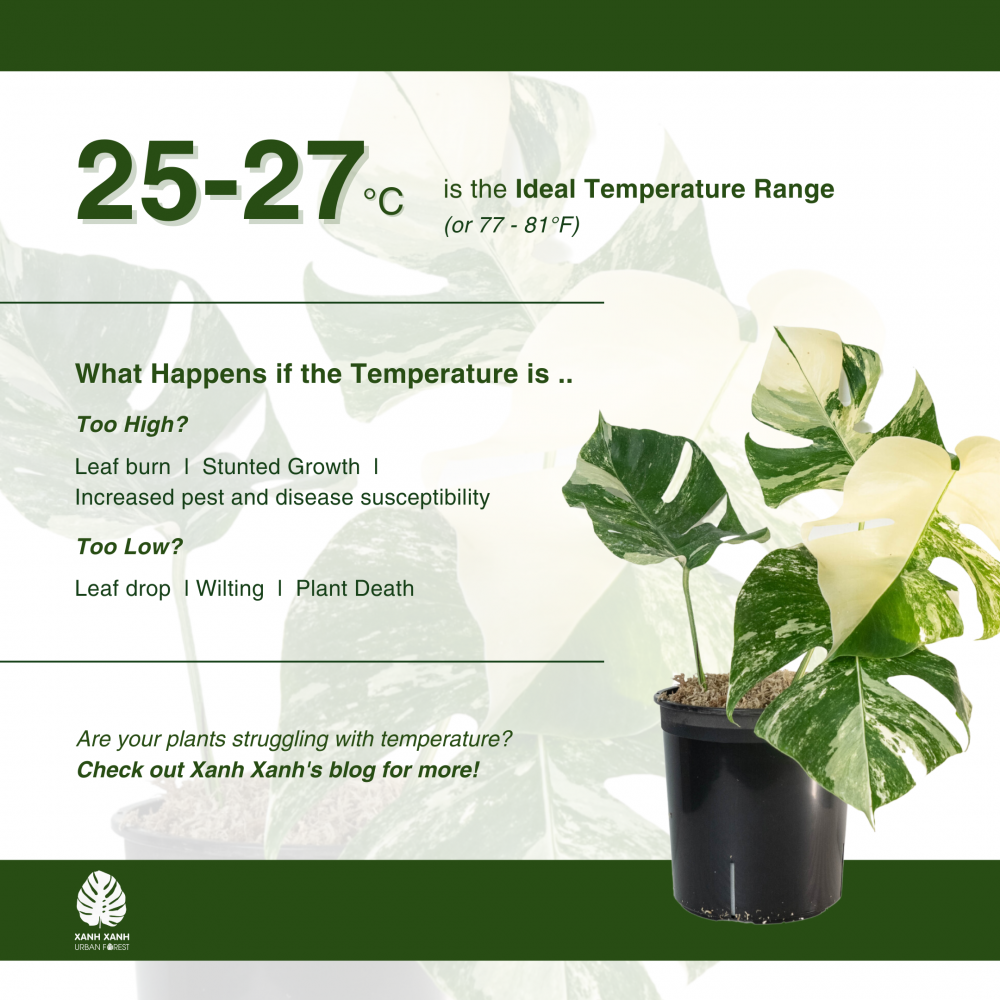
2. Ideal Temperature
Monsteras are closely related to their habitat, which is responsible for their attractive foliage and rapid growth. With an ideal range between 25°C and 27°C (77°F and 81°F), these tropical beauties thrive in a particular temperature range. To the fullest extent possible, the plant can develop glossy leaves and aerial roots that add to its irresistible tropical attractiveness when this steady, comfortable warmth is maintained. Accurate thermal management is essential to the long-term health and growth of Monstera plants, since departures from this ideal temperature range might impede their growth and vitality.
3. What happens if the temperature is too high?
When temperatures exceed the optimal range for Monsteras, the plant may experience a variety of negative consequences.
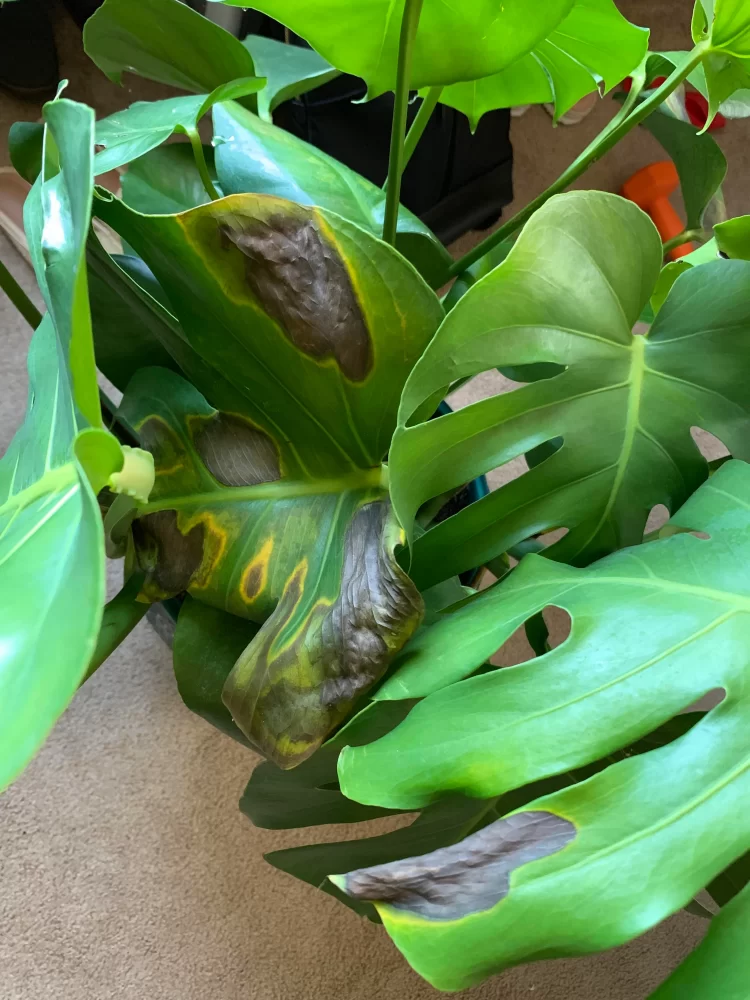
Leaf burn
When exposed to excessive heat, Monsteras lose water more rapidly than they can absorb it. This dehydration scorches the leaf margins, causing them to brown and become crispy. In severe cases, the entire leaf may wilt and die off.
Stunted growth
Monsteras thrive in consistent, moderate temperatures that support metabolic processes and encourage new leaf production. When exposed to prolonged heat, these processes slow down, leading to stunted growth. You might observe smaller leaves wit
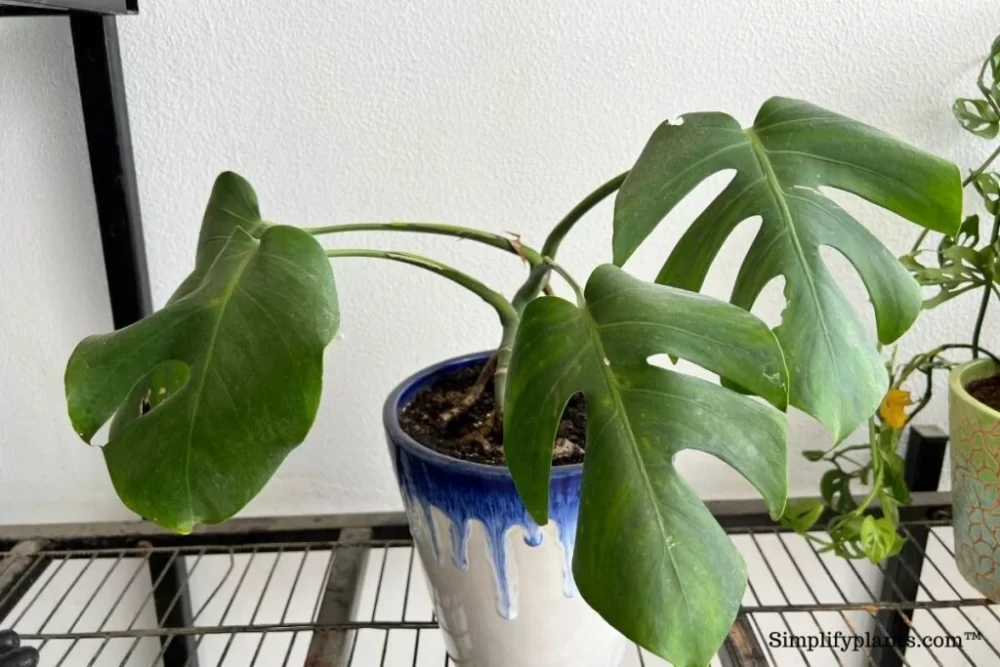
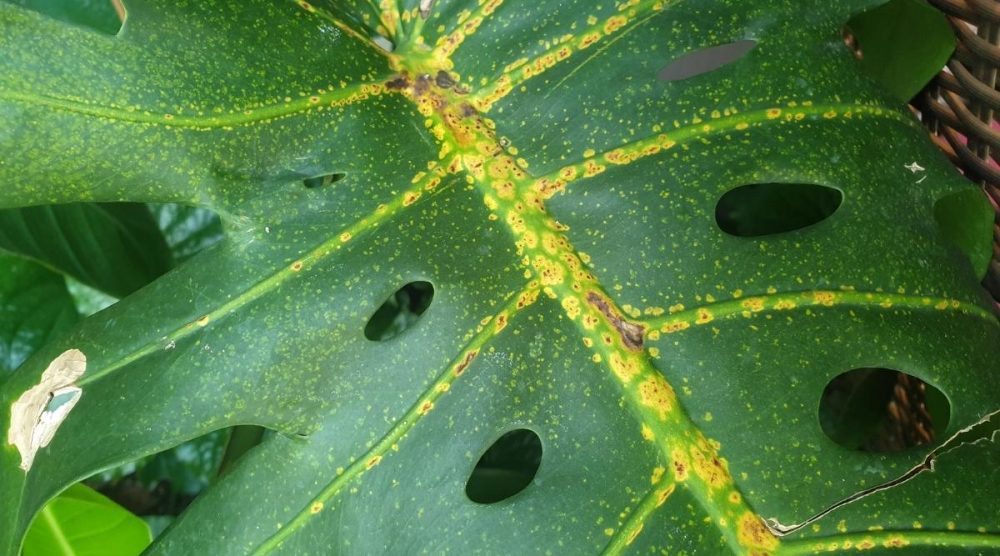
Increased pest and disease susceptibility
In addition, the warm, humid conditions brought on by extreme heat make people more vulnerable to illnesses and pests. These circumstances are perfect for the quick reproduction and colonization of fungus spores and insects. Consequently, Monsteras under heat stress are more vulnerable to diseases and infestations.
Solutions
- Place your Monstera in a cool, shady area, ideally out of the sun. This could be beneath a canopy of taller plants, a shaded part of a room, or a window facing north. Keep it away from heat sources such as fires, radiators, and even hot-emitting electronics.
- In excessively hot climates, additional cooling measures may be necessary. Misting the leaves regularly with cool water can provide temporary relief and boost humidity. Air-conditioning can be a valuable tool, but avoid placing the plant directly in the airflow to prevent drying. Consider using a humidifier to increase ambient moisture levels, especially during dry spells.
- It is common for higher temperatures to cause faster evaporation of water, so modify your watering plan accordingly. When the soil seems completely dry to the touch, deeply water it; however, do not overwater as this can cause root rot. Select a potting mix that drains effectively to guarantee adequate water flow and avoid waterlogging.
4. What happens if the temperature is too low?
When ambient temperatures dip below 15°C (59°F), the plant enters a state of dormancy characterized by significantly decelerated growth or complete arrest. This dormancy mechanism helps conserve resources during unfavorable conditions. However, excessively low temperatures, beyond dormancy thresholds, can cause detrimental effects. Exposure to prolonged cold can damage cellular structures, leading to visible symptoms like leaf drop, wilting, and even plant death.
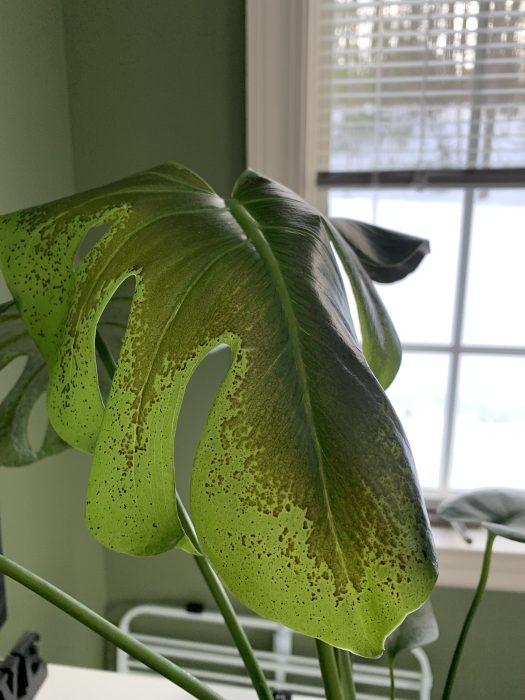

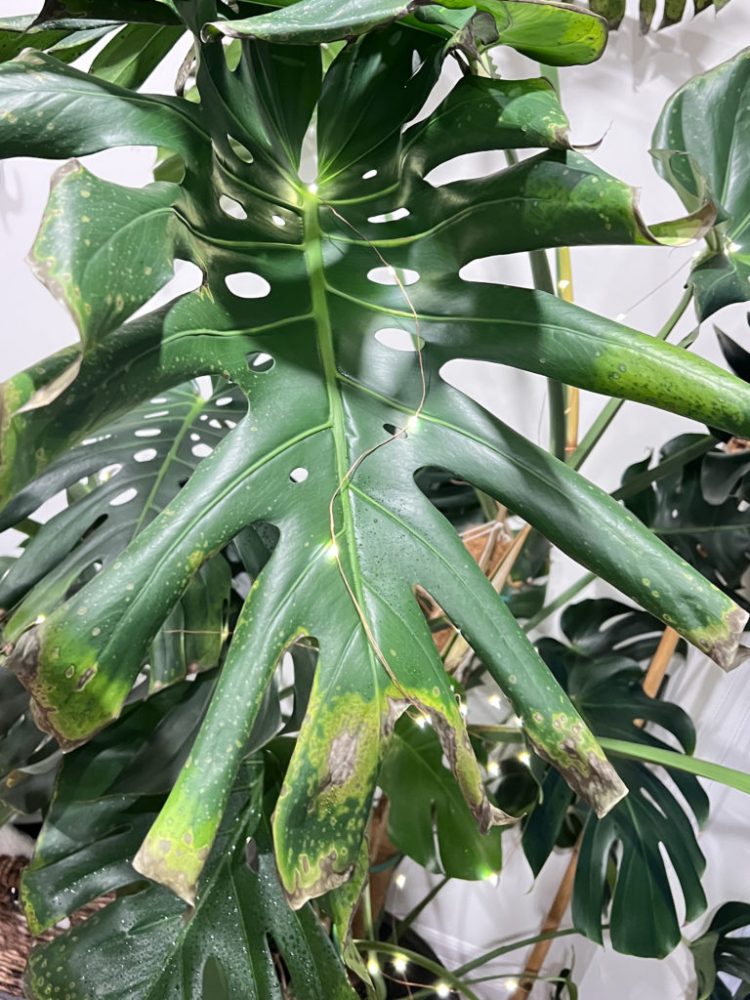
If some leaves fall during winter, due to factors like cold stress or reduced light, remain calm. This is a natural adaptation that will bring back the lush beauty of your Monstera when springtime brings a rush of fresh leaves. When leaves start to disappear, resist the temptation to water too much, as this might make the problem worse. Have faith in the organic cycles of your Monstera and concentrate on preserving the perfect conditions for new growth to emerge.
Solutions:
- Embrace warmth: During winter, particularly in colder climates, consider relocating your Monstera indoors. Opt for well-lit spaces that maintain consistently warm temperatures within the ideal range of 77°F – 81°F (25°C – 27°C). Be mindful of cold drafts and avoid placing your Monstera near windows with significant temperature fluctuations.
- Adjust watering regime: With the slowing of growth during winter, your Monstera’s water needs significantly decrease. To avoid overwatering, which can lead to root rot, adjust your watering schedule accordingly. Allow the top inch of soil to dry completely before watering again. This reduced frequency provides sufficient moisture while preventing waterlogging.
- Limit fertilizer application: As the metabolic activity of your Monstera slows down in winter, its nutrient demand also diminishes. Consequently, limit fertilizer application throughout this period. Excessive fertilization during dormancy can burden the plant and potentially cause fertilizer burn. Opt for occasional light application of a diluted solution, and focus on resuming regular fertilization with the return of spring and active growth.
5. Final thoughts
The Monstera is a beautiful and versatile plant that can thrive in a variety of indoor settings. However, understanding its temperature preferences is essential for ensuring its long-term health and happiness.
Xanh Xanh Urban Forest hopes this blog post has helped you to understand the importance of temperature for your Monstera. By following the tips and suggestions provided, you can help your Monstera thrive and bring a touch of the tropics to your home.
Read more: Monstera Care: The Ultimate Guide from A to Z
Contact us if you have any questions:

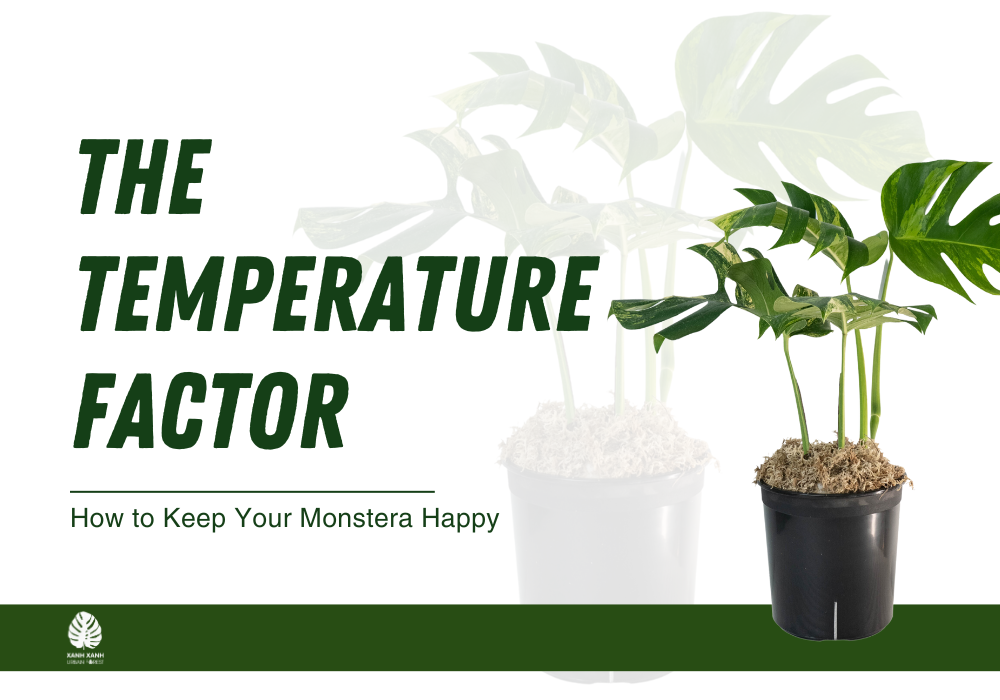





Pingback: Why Are My Monstera Leaves Turning Yellow? • Garden Growth Guru